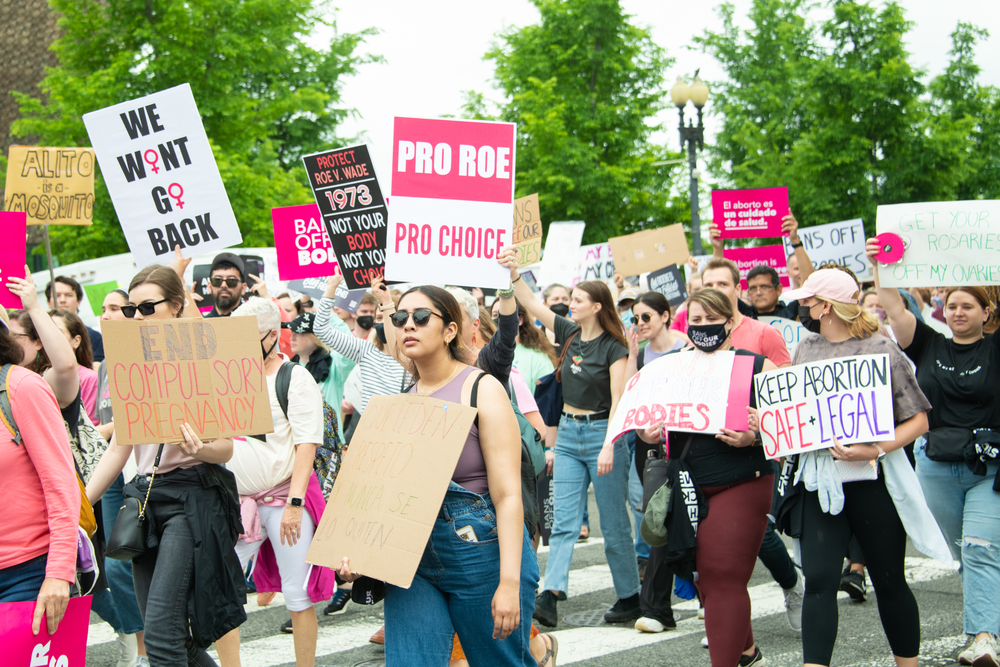JAMA Psychiatry recently published a study investigating the relationship between state-level access to reproductive care and suicide in the United States.
Jonathan Zandberg and his team of researchers at the University of Pennsylvania found an association between the enforcement of TRAP (Target Regulation of Abortion Providers) laws and higher suicide rates. They found that suicide rates in reproductive-age women increased by 5.8% following abortion restrictions by comparing state-level suicide rates with the TRAP laws index, a tool for measuring states’ yearly restrictions to reproductive health.
According to the researchers:
“The findings are significant for several reasons, especially given that suicide represents the second (ages 20-24 years) and third (ages 25-34 years) leading causes of death among reproductive-aged women… Access to reproductive care may present a potentially modifiable population-level suicide risk factor for reproductive-aged women. The results may have important implications for clinicians and policymakers in the United States.”

Previous studies suggest that suicide is among the leading causes of young women in the United States. While research has focused on individual, biological, and psychological factors related to suicidality, studies suggest that external and environmental factors generate stressors that influence suicidal behavior.
While many claim that abortion leads to psychological distress and mental illness, scientific studies have refuted such claims and have found that women experience increased depression and anxiety when they are denied abortion access.
While previous research has focused on the influence of restrictions to reproductive health on physical and mental health, no research has studied the relationship between the suicide rate in reproductive-aged women and their access to this type of care. For this reason, the researchers aimed to bridge the gap by studying the associations between state-level legislation restricting reproductive healthcare and suicidality in this population.
Women aged 44-74 were considered to be in their post-reproduction years and were used as the control group for this study. As previously mentioned, the researchers used the TRAP laws index, which “maps three state-level TRAP laws as recorded by Austin and Harper: ambulatory surgical center laws, admitting privileges, and transfer agreements.” This records When a TRAP law is enforced, the index’s score increases by 1, and when a TRAP law is blocked, it is decreased by 1. They also used publicly available, deidentified, state-level data published by the CDC to access yearly suicide rates.
The team accounted for the influence that economic factors, race/ethnicity, and political affiliation might have over suicide rates and their association with the TRAP laws index. To do so, they included state-level gross domestic product as reported by the Bureau of Economic Analysis and the annual state-level unemployment rates as reported by the Bureau of Labor Statistics, state-year proportion of Black or African American residents as estimated by the Population Division of the Census Bureau.
They also controlled for the annual fractions of Republican senators representing the state at the US Senate. The team used data from 1974 to 2016; thus, it does not consider the recent legal restrictions on reproductive health across the US.
According to their findings, all states introduced some legislation that either limited or endorsed reproductive care between 1974 and 2016, and twenty-one states enforced a minimum of one TRAP law during that timeframe. During that time, the annual suicide rate among reproductive-aged women was between 1.4 to 25.6 per 100,000, while the suicide among post-reproductive-age women was 2.7 to 33.2 per 100,000. During years when no TRAP laws were enforced, the suicide rate was 5.5 per 100,000 deaths in reproductive-aged women.
The suicide rate was 5.81% higher in reproductive-aged women during the years when TRAP laws were enforced compared to non-reproductive-age women. Race, ethnicity, state GDP growth, and state unemployment did not mediate the relationship between suicide rates and TRAP laws, meaning that suicide rates were similar between racial and ethnic groups, socioeconomic statuses, and political affiliations.
The study had various limitations. Among them was their lack of access to direct, individual-level data, and they had to rely on data from previous studies. For this reason, they had no access to the mental health consequences of restriction to abortion, and their demographic data was limited, unable to account for pregnant women and other gestating people, such as some transgender men and non-binary people.
Because of the limitations of the CDC’s and Census databases, they were also unable to study the differences in suicide rates by race and ethnicity beyond differences between the general population and Black or African Americans. Furthermore, although their method is among the preferred methods for suggesting causal inferences, it cannot determine causation. Among other limitations, the study might have underestimated the suicide rate as it depended upon reported estimates, and there was limited unavailable data which could influence the results.
The results of this study become relevant as legal restrictions on abortions have increased dramatically since the overturning of Roe vs. Wade in 2022. In addition, the study adds to the growing scientific literature on the topic, which has suggested that people do not experience trauma or negative psychological consequences from having abortions. On the other hand, being denied abortion has mental, physical, and economic implications in the lives of women and gestating people.
When read alongside the previous studies, the results suggest that this population not only experiences increased depression and anxiety after being denied an abortion but might contemplate suicide when their options are restricted. Therefore, policymakers with a genuine interest in the welfare of women and gestating people must address restrictions to reproductive health to promote their health and well-being.
****
Zandberg, J., Waller, R., Visoki, E. & Barzilay, R. (2022). Association Between State-Level Access to Reproductive Care and Suicide Rates Among Women of Reproductive Age in the United States. JAMA Psychiatry, Online First, doi:10.1001/JAMA psychiatry.2022.4394 (Link)














